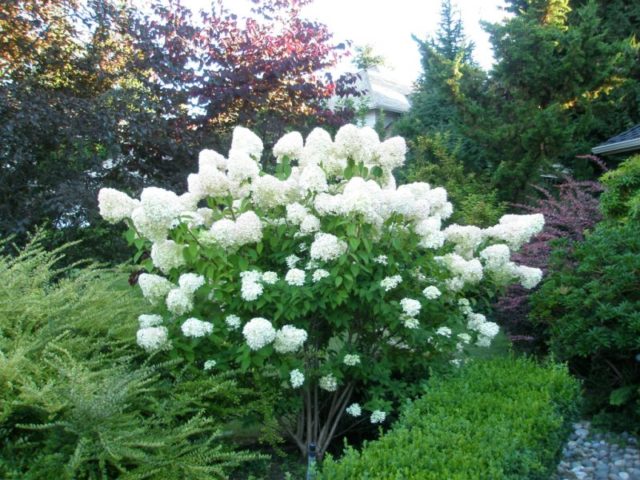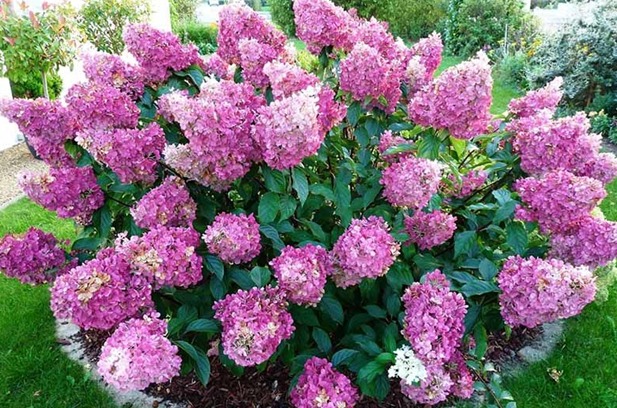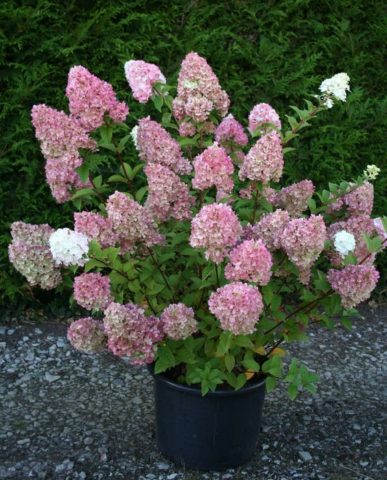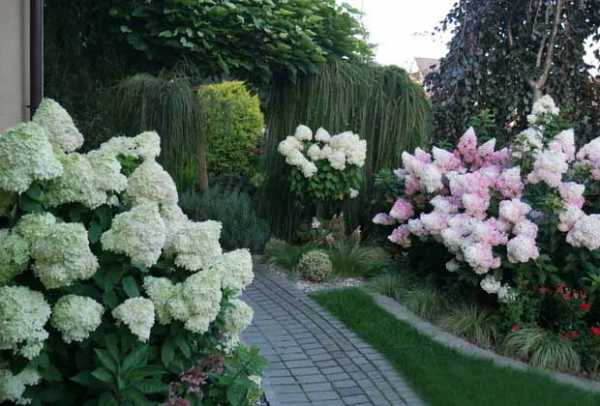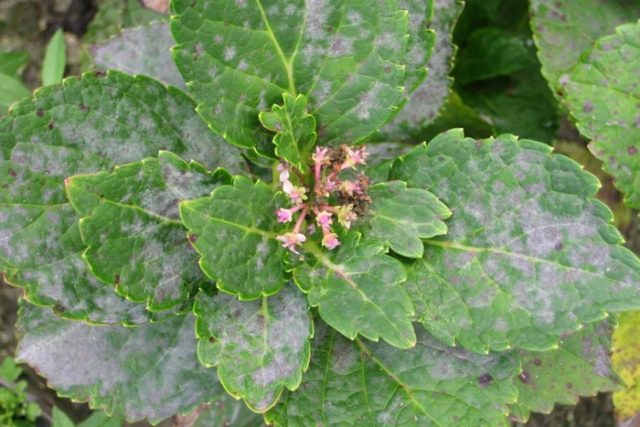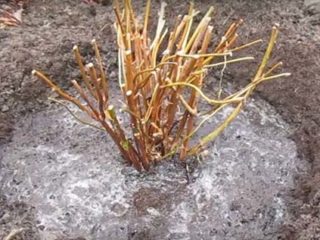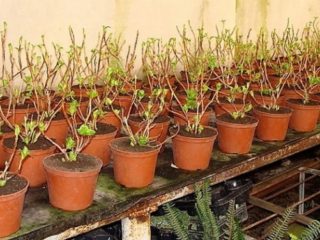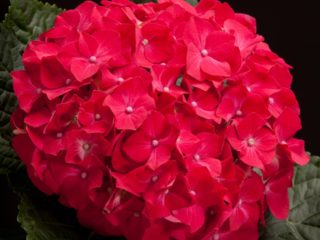Content
- 1 Description of panicle hydrangea variety Sunday Fries
- 2 Hydrangea Sunday Fries in landscape design
- 3 Winter hardiness of hydrangea Sunday Fries
- 4 Planting and caring for a panicle hydrangea variety Sunday Fries
- 5 Reproduction of hydrangea Sunday Fries
- 6 Diseases and pests
- 7 Conclusion
- 8 Reviews of panicle hydrangea varieties Sunday Fries
One of the most attractive flowering shrubs is the Sunday Fries hydrangea. A unique feature of this variety is a beautiful, dense spherical crown. Thanks to this, the plant practically does not need pruning. In addition, it does not require particularly complex maintenance. Hydrangea will bloom luxuriantly all season in moderately acidic, fertile soil with regular watering.
Description of panicle hydrangea variety Sunday Fries
Sanday Fraise (paniculata sundae fraise) is a hydrangea variety that blooms from mid-June to September (in the south - until October). Gives lush, very beautiful flowers (diameter up to 2.5 cm) of white, light and rich pink shade with delicate petals. Moreover, first light flowers appear, then they become pale pink, after which they acquire the brightest color.
This variety was bred in 2010, but in several years the Sunday Fries managed to spread widely, including in Russia. The bush has a dense, beautiful crown of dark green shades. The leaves are large, grow up to 10-12 cm in length. At the same time, they are narrow, look miniature and serve as an excellent background for lush inflorescences.
The height of the hydrangea Sunday Fries reaches no more than a meter. But the bush grows well to the sides, while remaining compact and attractive. A distinctive feature is that the plant independently takes the shape of a ball, so it does not require special formation. It is enough to carry out only anti-aging pruning 1-2 times per season.
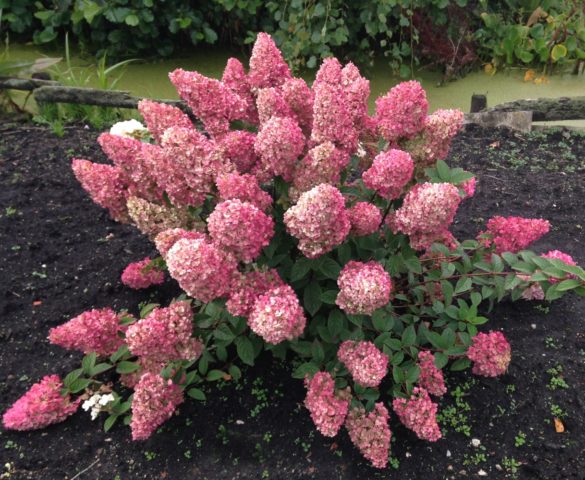
Sunday Fries is distinguished by beautiful flowers of pale pink color, collected in lush panicles
Hydrangea Sunday Fries in landscape design
Some gardeners call Sunday Fries "strawberry ice cream" because its flowers truly resemble this delicious dessert. The bushes have a high decorative value, look good both in single plantings and in combination with other garden flowers. Here are some interesting examples:
- The flowering bush looks good against the background of smaller green plants, along paths or in the very thick of the garden.
- Thanks to its spherical shape, Sunday Fries can be used for a rounded flower bed, the outline of which can be decorated with small stones.
- Another way to decorate is to plant a hydrangea bush in a small bucket that can be placed anywhere.
- Hortense Sunday Fries looks great next to walkways and home. It is she who creates the impression of a lush, blooming garden.
- Sunday Fries, together with other varieties of hydrangea, look harmonious with each other. When creating a joint composition, you only need to cut off all the plants in time so that they are about the same height.
Winter hardiness of hydrangea Sunday Fries
The variety is characterized by moderate winter hardiness. The description indicates that Sunday Fries can withstand temperatures as low as -20 degrees.If the indicator drops even lower (which happens every winter in the Urals and Siberia, and often in the middle lane), young shoots will die. Under these conditions, the apical flower buds will also freeze.
Therefore, Sunday Fries, like all other varieties of hydrangea with pink flowers, need a mandatory shelter for the winter. They make it in a variety of ways - with burlap, plastic wrap, using foliage.
Another drawback of the Sunday Frize hydrangea is that the plant is very fond of water and lighting. Therefore, simply hoping for rainwater irrigation will not work. The bush is also picky about the soil. He prefers fertile soil and regular fertilization.
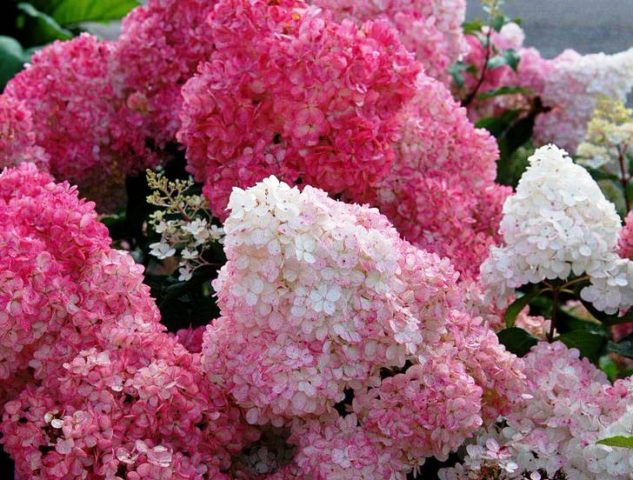
If you provide hydrangeas with normal care, all efforts are guaranteed to be rewarded.
Planting and caring for a panicle hydrangea variety Sunday Fries
Seedlings of Sunday Fries are purchased in special stores or nurseries. They should look healthy, without external damage. It is better to plant a seedling in the spring - then it will have time to gain strength over the summer and take root on the site.
But in the southern regions (Kuban, Stavropol, North Caucasus), it is allowed to plant a hydrangea Sunday Fries in the fall. In this case, the shoot is rooted already in October so that it does not have time to start growing. It must be insulated for the winter so that the branches are not damaged by frost.
Selection and preparation of the landing site
This variety, like other plant varieties, prefers a well-lit, but at the same time, semi-shaded area. You can plant a bush next to other shrubs or trees, or next to a house and other buildings. But in this case, it is better to place the plant on the south, southeast side - otherwise the lack of light will affect flowering. In the northern regions, it is better to place the bush in a well-lit place with a complete absence of shady covers.
Also, when landing, you should pay attention to the fact that the Sunday Fries does not tolerate open winds. Therefore, it is optimal to grow it under the cover of a green hedge, bushes. At the same time, hydrangea needs moisture - it should not be planted next to crops that actively absorb moisture (marsh plants, birch, some berries).
As for the requirements for the soil, it should be fertile soil (black earth, loam) with pronounced acidity (pH about 5.0). Hydrangeas do not like a neutral reaction (pH = 7.0), and on alkaline soils they grow extremely poorly, often they do not even bloom.
Therefore, if the soil is alkaline (you can check with a special solution or a pH meter), it must first be acidified. This can be done using natural (needles, sawdust, compost, fresh manure) and chemical (a teaspoon of citric acid or 100 ml of 9% vinegar per 10 liters of water) means.
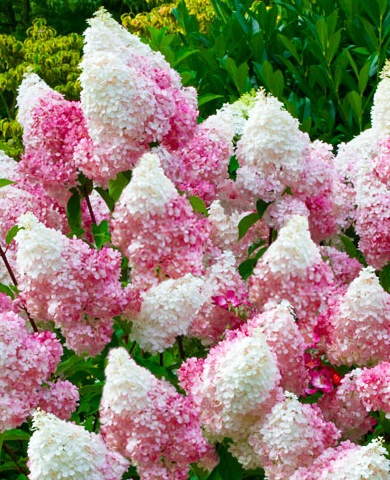
Lush flowering can only be achieved with the help of acidic fertile soil.
Landing rules
For planting hydrangeas, a small pit is suitable, the length and diameter of which is about 30 cm.When planting several bushes, the interval between them should be at least 1 m, since the Sunday Fries grows well in width. As a soil, you can pick up a soil mixture from the following components:
- sheet land (2 parts);
- humus (2 parts);
- peat (1 part);
- sand (1 part).
The landing sequence is as follows:
- They dig a hole 30 * 30 cm. In this case, the diameter can be chosen arbitrarily, so that the roots are spacious, but the depth should not be increased.
- Water well with 2-3 buckets of water.
- Cover with soil mixture, place the seedling exactly in the center.
- Leave the root collar at ground level and cover with soil, water again.
- Mulching with compost, peat, pine needles.
Watering and feeding
Almost all varieties of hydrangea are very fond of water, so watering should be abundant. The mode depends on the season and on the availability, as well as the amount of precipitation. In general, 2-3 buckets of water are spent on 1 adult bush, one is enough for a young seedling. Water in a radius of 1.5 meters around the central stem. Moisture should be moderate, as excess water damages the roots.
Therefore, you can choose the following watering mode:
- in spring and autumn weekly;
- hot summer twice a week;
- if it rains 1-2 times a week, you do not need to water.
Fertilizer is applied regularly:
- Young seedlings of Sunday Fries are given complex fertilizer immediately upon planting.
- In the spring, they give nitrogen mineral or organic fertilizing (infusion of droppings, mullein).
- During the formation of buds and first flowers, Sunday Fries needs potash and phosphorus supplements, which are applied monthly.
- At the end of summer, feeding is no longer given - the plant must prepare for the period of winter dormancy. Then the cycle repeats.
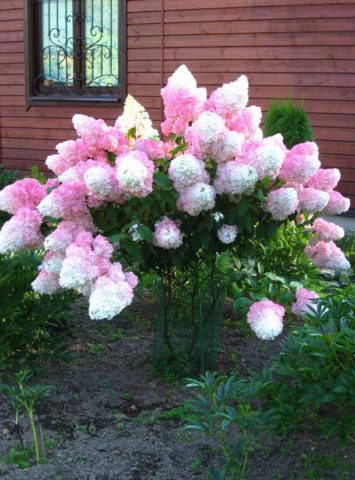
Lush flowering is possible only with monthly fertilization, especially at the stage of bud formation
Pruning hydrangea Sunday Fries
This hydrangea variety forms regular spherical shapes. Therefore, pruning is carried out mainly for sanitary purposes. At the beginning of each spring it is necessary:
- completely remove dead and weak shoots;
- prune growing branches up to 2-3 buds;
- thinning the crown.
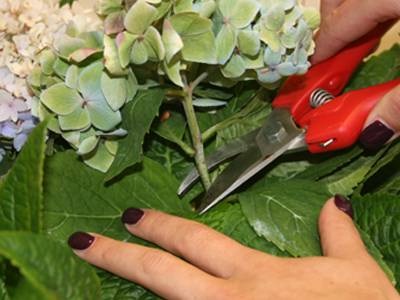
Plant pruning can be done with pruning shears or garden shears.
Preparing for winter
Adult shrubs do not need a special shelter for the winter, with the exception of the regions of Siberia and the Urals. In the south, hydrangeas are never covered at all - it is enough to mulch the roots with needles, foliage or sawdust.
In other cases (young seedlings, regions with extreme winters), it is better to additionally cover the bush. To do this, you can use burlap, agrofibre and even artificial materials (polyethylene). Hydrangea tolerates moisture well, so do not be afraid that the bush will crush under the film.

Mulching hydrangeas for the winter is mandatory even in the southern regions.
Reproduction of hydrangea Sunday Fries
You can dilute this variety in any of the usual ways:
- Green cuttings.
- Layers.
- By dividing the bush.
- Seeds (the longest way).
Often gardeners prefer to propagate Sunday Fries with layering, as this is a very simple way to guarantee a new shrub. First, in March or April, before the buds grow, the lower shoots are laid on pre-loosened soil and sprinkled on them. Only the top of the head remains on the surface.
They organize regular watering, and in September they are separated and planted in the open field one by one. The next spring, these layers can be placed in areas of constant growth. The result is an exact replica of the mother plant.
Diseases and pests
Among the most common diseases of this flower are:
- powdery mildew;
- gray rot;
- chlorosis (yellowing of leaves);
- ring spot.
Also, pest damage is not excluded:
- leaf roll;
- aphid;
- golden bronzovka;
- spider mite.
Fight against fungal infections with fungicides, Bordeaux liquid, insects - insecticides and folk remedies.
The development of diseases and the invasion of pests always affect the plant, so it is worth regularly examining the bush.
Conclusion
Hortensia Sunday Fries is successfully bred in central Russia, in the north, south. A review of this variety shows that it has a high decorative value and is not picky about care. It can be bred even in regions with harsh winters; if you follow the simple rules, there will be no problems with growing beautiful flowers.
